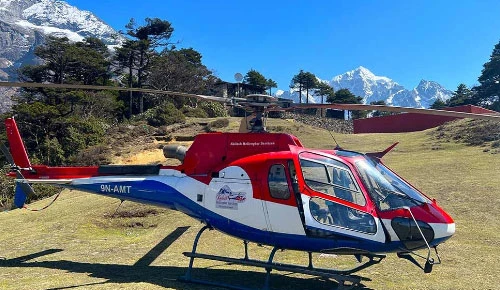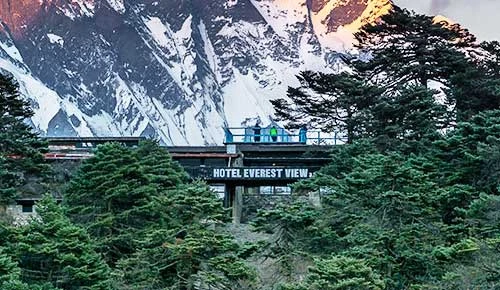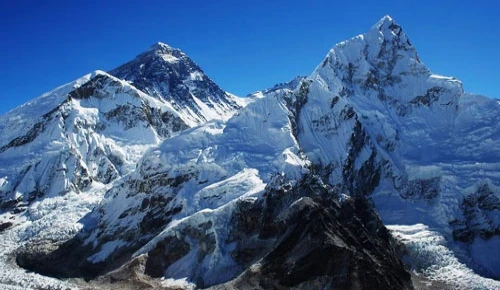Acclimatization Places in EBC Trekking Route
Everest Base Camp Trek is a renowned trek in Nepal where travelers embark on marking their footprints in the base camp of the world’s tallest mountain Everest.
Trekkers seeking an iconic trekking experience to the base of Mount Everest can choose this trek. The trek passes through lush valleys, historic monasteries, and lovely Sherpa villages before starting with a spectacular flight from Kathmandu to Lukla.
Highlights, including Namche Bazaar, Tengboche Monastery, and Kala Patthar, provide breathtaking views of Everest and the surrounding peaks.
Table of Contents
About Acclimatization
Acclimatization can be compared to the body's way of saying, "Let me help you get used to this." It's the process by which you adapt to a change in your surroundings, such as acclimating to a new temperature or altitude.
It's as though your body and your surroundings are attempting to work out a comfortable balance.
Physiological and behavioral changes caused by acclimatization assist an organism in adapting to a new environment. For instance, your body may produce extra red blood cells to enhance oxygen delivery if you find yourself at a high altitude.
It's crucial to remember that acclimation takes time. Everybody's body reacts differently, and you can't force your body to acclimate more quickly than it naturally does. For this reason, it's important to rise gradually so that, before going higher, your body has time to adjust to the new altitude.
The phrase "climb high, sleep low" describes this idea, which is essential for preserving health and preventing altitude sickness on high-altitude hikes like this.
Why do you need to acclimatize?
Acclimatization is essential when you encounter environmental changes, particularly those involving temperature, altitude, or other difficult circumstances. These are the reasons why:
Oxygen Levels: Less oxygen is present in the air at higher elevations. Your body adjusts to acclimatization by producing more red blood cells and enhancing the transfer of oxygen.
Regulation of temperatures: Acclimatization makes it easier for your body to maintain a stable temperature at high elevations. This could involve changes to metabolic processes or patterns of sweating.
Pressure Changes: Your body may experience variations in pressure when you rise to higher elevations. Your sinuses, ears, and other organs can adjust to these pressure changes with the help of acclimatization.
Hydration: Acclimatization to hot and dry conditions may entail changes in sweating patterns or an increase in water retention.
Essentially, acclimatization is the body's process of fine-tuning itself to more effectively manage the specific challenges caused by a new environment. It functions as an innate survival tactic that enables you to flourish in a variety of environments. Acclimatization will help make your trek more safe and fun, minimizing the risk of altitude sickness and other physical difficulties.
Acclimatization in the Everest Trekking Trails
Given the high altitude, the Everest Base Camp Trek is an ideal example of the significance of acclimatization. The ascent of Everest tests your body's capacity to adjust to the thinner air at higher altitudes, in addition to being a physical challenge.

The trek usually consists of gentle ascents mixed with rest days to allow you to adjust to the altitude. As you ascend, this helps the body's adaptation to the falling oxygen levels. It's a wise strategy, as altitude sickness is possible if you climb too quickly without allowing your body to adjust.
You should plan for acclimatization days in the itinerary of Everest Base Camp Trek to make sure you acclimate appropriately for your trek. These are the days when you either stay at the same elevation or hike to a higher altitude to help with acclimatization before returning to sleep.
Acclimatization Places During Everest Trekking Route
The trek’s schedule thoughtfully includes acclimatization, with some locations picked to aid in your body's adjustment to the rising altitude. Along the trek, as per our itinerary, the trek considers these important acclimatization stops.
Namche Bazar
Situated at an elevation of 3,440 meters (11,286 feet) in the Himalayas, Namche Bazaar is a crucial part of the Everest region.
Namche is important for acclimatization for reasons other than its thriving market and cultural significance. Trekkers often face their first big elevation rise upon reaching Namche, so adding a day here is a wise plan to enable the body to acclimate gradually.

Namche offers more than simply a day off from the path; it's an opportunity to discover how Sherpa culture and modern facilities have come together to create a unique town. Trekkers can learn about local history and climbing practices by visiting the Sherpa Museum.
This day's gradual pace facilitates acclimatization, enabling the body to adjust to the lower oxygen levels that are typical of higher elevations. During the acclimatization day in Namche, trekkers frequently take small climbs to higher heights, giving their bodies a taste of the rising altitude without stressing them.
By using this calculated approach, the likelihood of altitude sickness is reduced and a safer ascent is guaranteed as the walk continues. All things considered, Namche Bazaar is more than simply a charming trailside destination; it's an essential acclimatization stop that establishes the mood for the adventure that takes place in the stunning Himalayas.
Dingboche
At 4,410 meters (14,469 feet) above sea level, Dingboche is a crucial acclimatization stop for hikers heading to Base Camp.
There is a substantial elevation rise on the journey from Namche Bazaar to Dingboche, and this break is positioned to provide hikers with a critical day to acclimate their bodies to the thinner air.

Nestled among towering peaks, the settlement of Dingboche offers a lovely backdrop for acclimatization. Trekkers can find the distinctive cultural subtleties of this high-altitude village here, as well as visit the nearby monasteries and socialize with the amiable Sherpa people.
By enabling the body and mind to adjust to the rising altitude, these activities enhance the overall acclimatization experience. Trekkers often take daytime short hikes to higher elevations near Dingboche to accelerate acclimatization.
Trekking these routes provides amazing, sweeping views of adjacent peaks like Lhotse and Ama Dablam. Trekkers are prepared for the difficulties of the upcoming adventure by the steady rise and exposure to greater elevations without compromising on their safety.
Conclusion
Trekkers of all ages and backgrounds can benefit from the incredibly fulfilling and life-changing experience that is the Everest Base Camp Trek. It gives visitors the chance to fully engage with the vibrant Himalayan culture, take in breathtaking scenery, and gaze in astonishment at the foot of the tallest peak in the world.
A successful trek requires being emotionally and physically prepared, having the right trekking gear, and being in good physical shape, despite the hardships involved.
Having a good outlook and allowing yourself enough time to acclimate will make the whole experience even better. In addition to ensuring safety, hiring a local guide and porter offers insightful information about the ecology and culture of the area.








